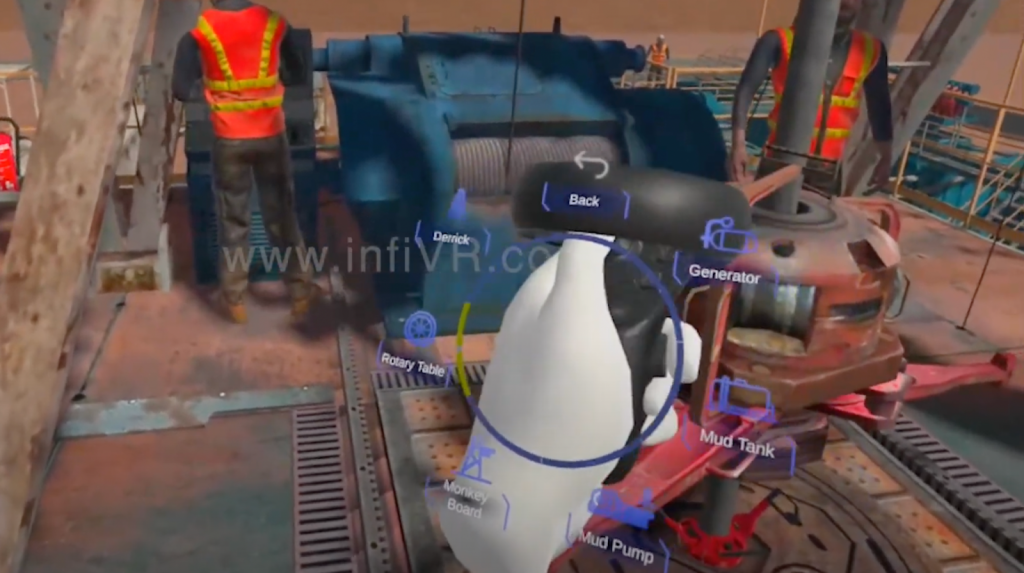Enhancing Petroleum Engineering Education with VR/AR: Immersive Learning and Visualization Solutions
The integration of Virtual Reality (VR) and Augmented Reality (AR) technologies into the field of petroleum engineering has revolutionized the way students learn and comprehend complex concepts in upstream, midstream, and downstream technologies. In this article, we explore the myriad benefits of using VR/AR-based learning tools and visualization solutions in petroleum engineering education. We will delve into how these technologies can facilitate a deeper understanding of various equipment, processes, and principles through 3D visualization, immersive experiences, and collaborative learning environments.
How AR/VR helps in upstream activities:
- Students can explore and manipulate virtual models of reservoirs, wellbores, drilling equipment, and production facilities. This immersive visualization helps students better understand the spatial relationships, operational processes, and equipment configurations involved in upstream activities
- AR/VR can simulate virtual field trips and site visits to remote or inaccessible locations. Students can virtually explore oil fields, offshore platforms, drilling rigs, and production facilities, gaining insights into real-world upstream operations. This virtual experience provides a cost-effective and immersive way for students to observe and understand the various components and processes involved in upstream activities.
How AR/VR helps in midstream activities:
- AR/VR can provide students with a visual representation of midstream infrastructure, including pipelines, storage tanks, terminals, and transportation systems. Students can explore and interact with virtual models, gaining a better understanding of the layout, connectivity, and operational aspects of midstream facilities.
- AR/VR simulations can allow students to design and optimize pipeline systems. They can virtually lay out pipelines, considering factors such as terrain, elevation changes, and routing options. Students can analyze flow rates, pressure profiles, and identify potential bottlenecks or inefficiencies. This hands-on experience in pipeline design and operation improves students’ understanding of fluid dynamics, hydraulics, and optimization techniques.
- AR/VR technology can simulate terminal operations, such as loading and unloading of tankers, storage management, and product blending. Students can virtually engage in managing storage tanks, coordinating transportation schedules, and optimizing logistical processes. This virtual experience provides a realistic understanding of terminal operations, supply chain management, and the challenges associated with midstream logistics.
- AR/VR technology can assist in understanding the environmental impact of midstream activities. Students can explore virtual environments to assess the potential ecological and social consequences of pipeline construction, storage facility operations, and transportation activities. This understanding of environmental considerations helps students develop sustainable practices and compliance with regulations.

AR/VR can help in petroleum downstream activities:
- AR/VR can provide students with a virtual tour of refinery facilities, allowing them to visualize and understand the various processes involved in downstream operations. Students can explore virtual refineries, observe equipment and unit operations, and gain insights into refining processes such as distillation, cracking, and blending.
- AR/VR can assist in learning about product quality control in downstream activities. Students can virtually analyze product samples, perform tests, and evaluate product characteristics such as viscosity, density, and composition.
- AR/VR can provide students with a virtual understanding of distribution networks and supply chain management in the downstream sector. Students can explore virtual warehouses, transportation systems, and terminals, learning about inventory management, logistics optimization, and scheduling processes. This virtual experience helps students understand the complexities of downstream supply chains and the importance of efficient distribution.
- Retail and Marketing Simulations: AR/VR can simulate retail environments and marketing scenarios related to downstream activities. Students can engage in virtual simulations of fuel stations, convenience stores, or marketing campaigns, gaining insights into customer interactions, branding strategies, and market dynamics. This virtual experience enhances students’ understanding of downstream retail operations and marketing practices.
The immersive nature of InfiVR’s AR/VR solutions enables students to be fully immersed in virtual environments that simulate real-world scenarios, such as well logging surveys, drilling operations, or refinery processes. These experiences allow students to practice critical decision-making skills, experiment with different parameters, and observe the immediate consequences of their actions, all within a safe and controlled learning environment.
Furthermore, InfiVR’s collaboration with leading petroleum engineering institutions extends beyond content development. InfiVR actively engages with faculty members to train and support them in effectively integrating AR/VR technology into their teaching methodologies. Workshops, seminars, and ongoing technical assistance are provided to ensure that educators can fully leverage the potential of these immersive technologies to enhance student engagement and learning outcomes.